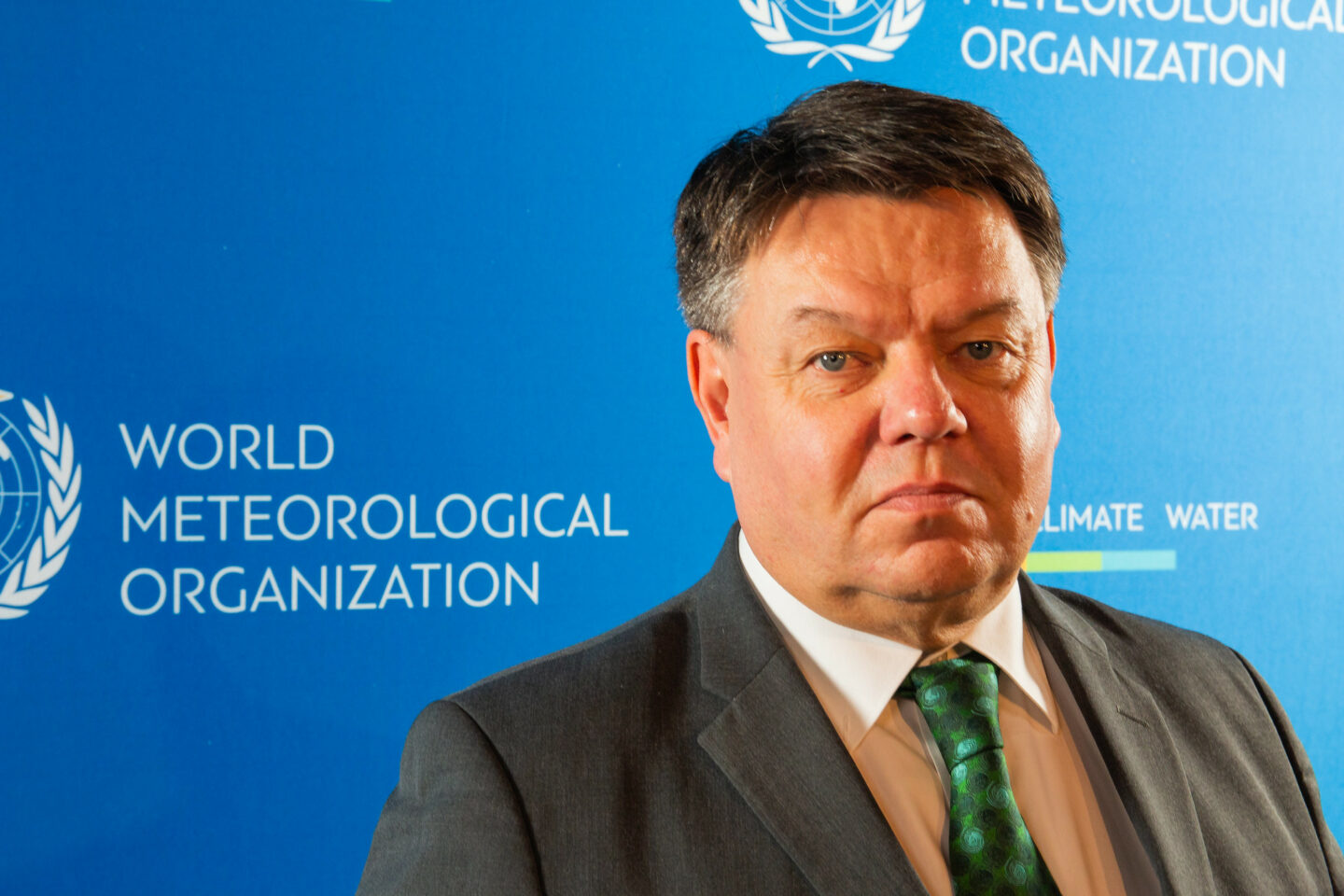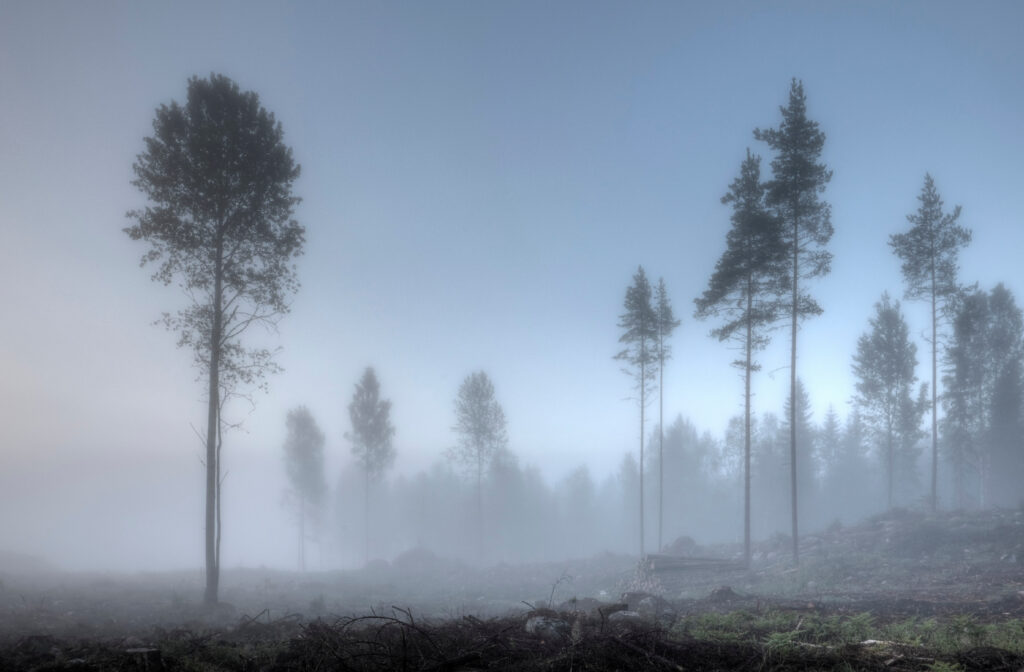A friendly reminder to clarify the position of WMO
–
Dear President and Vice-Presidents of the World Meteorological Organization (WMO), This is a friendly reminder of the open letter we the Finnish Association for Nature Conservation sent to your predecessors…

Dear President and Vice-Presidents of the World Meteorological Organization (WMO),
This is a friendly reminder of the open letter we the Finnish Association for Nature Conservation sent to your predecessors on 21 April to ask the WMO to clarify to what extent the statements made by the Secretary General Petteri Taalas in the Finnish media are based on climate science and if they represent WMO’s position as a whole? See our previous letter here.
Since then Taalas has been one of the main speakers at the opening seminar of the ongoing government negotiations. At the end of his presentation he claimed the following:
“Finland’s Climate Change Panel has made an initiative for 2035 carbon neutrality, which Marin’s government has accepted and it has also been agreed as Finland’s EU goal. The goal includes maintaining the carbon sink of forests at the previous level, which is an international peculiarity. This has also been criticized e.g. Prof. by Rockström. The importance of forests in terms of the economy, employment and the financing of the welfare state has not been sufficiently taken into account.”
However, this statement ignores that Finland’s carbon neutrality goal is set in the Climate Change Act of 2022, approved by the clear majority of the Finnish Parliament. The Act does not specify a level for forest carbon sinks but for sinks as a whole. Thus the goal includes managed forests, crop lands and grassland, managed wetlands, afforestation and deforestation.
The commitments under EU LULUCF Regulation were negotiated separately: Commission proposals were given in 2016 and 2021. The LULUCF Regulation sets targets for land sector sinks for the period of 2021-2025 and 2026- 2030. During the first commitment period a separate target, as so-called forest reference level, for the managed forest sinks is set for every EU country. For Finland the forest reference level is based on the calculations of the Natural Resources Institute Finland. During the latter commitment period the EU wide target and national targets are set for the land sector as a whole. EU’s goal on the land sector in 2030 includes enhancing the total sink compared to the level in 2016-2018 and EU’s climate neutrality goal also relies on enhancing carbon sinks. Also the target of the US to reach Net-Zero Greenhouse Gas Emissions in 2050 includes enhancement of carbon sinks. The same phenomenon is found even on the 31st slide by Taalas. Thus Finland’s carbon neutrality goal can hardly seem like an international peculiarity. The Paris Agreement itself requires protection of carbon sinks and reservoirs.
The comment on professor Rockström is also misleading as he does not claim targets for carbon sinks are unnecessary, but that targets on emission reductions and carbon sinks should be separate. In the interview mentioned by Taalas Rockström continues by stating his worry on the declining carbon sinks globally and supporting protection of forests and other ecosystems. This is supported by one of his articles published in PNAS, where the writers conclude ”Hence, safeguarding the biosphere from further degradation or collapse is an existential challenge for humanity.” In a tweet he also clarifies his stance: “Climate models count on both forest sinks AND phase out of fossil fuels. No room for offsetting.”
Arguing against offsetting fossil emissions with carbon sinks is quite different from arguing against protection and enhancement of natural carbon sinks including forests.
Both Taalas and Rockströn forget that the Finnish Climate Change Act also aims at net negative emissions after 2035 and includes separate emission reduction targets (excluding the LULUCF sector) for 2030, 2040 and 2050.
The content of the presentation by Taalas can lead the reader astray when it comes to carbon sinks, says climate scientist Antti-Ilari Partanen from the Finnish Meteorological Institute in a twitter thread. Also Sampo Soimakallio, Head of Unit at the Finnish Environment Institute, has criticized the presentation of Taalas on sinks on Twitter.
“Biodiversity is a new issue. It is important to specify what is the problem and what is sound policy. It is good to separate Finland and international problems. In general, more documentation about the problem is needed.”
The statement ignores that more than 30 years ago at the Rio Conference an international treaty The Convention on Biological Diversity (CBD) was agreed upon. It has been ratified by 196 nations.
The EU has a long tradition on conservation policy, and its key legislation the Birds Directive was adopted in 1979 and the Habitats Directive was adopted in 1992. Finland’s national Nature Conservation Act is more than 100 years old.
The assessment of threatened species in Finland was conducted for the fifth time in 2019. This is also the third time the Red List species assessment was carried out in Finland using the internationally comparable “Red List Categories and Criteria” established by the International Union for Conservation of Nature (IUCN). According to these criteria one out of nine of the evaluated species in Finland are threatened. The assessment of 2019 concludes that “Of the species evaluated in 2010, 10.5% were given threatened status, and this has now risen to 11.9%. This negative trend shows us that we have not succeeded in halting the decline facing our country’s species.”
The threat status of habitat types in Finland was evaluated for the second time in 2018. Almost half (48%) of the nearly 400 habitat types across the country were assessed to be threatened.
Finnish scientists have gained international acknowledgement for their work on biodiversity and conservation research. Most renowned is late professor Ilkka Hanski who gained prizes including the Balzan Prize in 2000, the Crafoord Prize in Biosciences in 2011 and Frontiers of Knowledge Award in 2016.
We at FANC wonder what scientific work of the WMO this statement by Taalas on biodiversity is based on?
Taalas also published a column in Iltalehti 22.5.2023 were he stated:
Finland has the world’s most ambitious climate goal, the balance of emissions and sinks, i.e. carbon neutrality by 2035.
From the point of view of several parameters Finland is amongst the leaders in fighting climate change. However this statement looks only at the commitment year, but not the overall ambition and what is included in that goal. It also ignores the progress towards achieving climate goals.
Finland is committed to reducing greenhouse gas emissions by 60 percent (excluding the LULUCF sector) by 2030. In Denmark, the corresponding figure is 70 percent, in Great Britain 68 percent, in Germany 65 percent and in Sweden 63 percent. Sweden has a climate neutrality goal in 2045, but on top of keeping its natural carbon sinks stable it includes additional carbon sinks. As the Chair of the Finnish Climate Change panel Markku Ollikainen has pointed out: “They want to keep the net sink of their own land use sector constant and compensate for the remaining emissions by making new sinks. In other words, Sweden with Finland’s way of thinking will be carbon neutral within two or three years.”
As Head of Climate Unit, Ministry of the Environment Outi Honkatukia reminds Finland is amongst the countries in the EU to have the most ambitious targets on the effort sharing sector, namely 50 percent by 2030. However, setting a goal is easy, but it is also important to monitor the implementation. By 2021, Sweden had succeeded in cutting emissions from the effort sharing sector by 31 percent, while in Finland these emissions had decreased by only 21 percent. Sweden, Denmark and the Netherlands are significantly closer to reach the new tightened effort sharing sector goal than Finland.
The latest greenhouse gas inventory for 2022 confirms that Finland’s net emissions have not decreased from the level of 1990. This is due to land sector carbon sinks reducing and being near level zero.
The Paris-based International Energy Agency (IEA), on the other hand, stated that the dependence of Finland’s 2035 goal on land use constitutes a clear risk for the realization of the 2035 goal, and that achieving the goal would require the introduction of new means.
Again, the reference can be misleading. The IEA states:
“Much greater reliance may need to be placed on emissions reductions in the energy sector and much stronger measures may be required to ensure that LULUCF can act as a growing carbon sink. Finland has vast knowledge about sustainable forest management and ways to achieve optimal carbon sinks. However, current measures, for example afforestation, will take a long time to become effective. Additional measures to increase the carbon sinkvcapacity should be taken as soon as possible.”
“The net land sector emissions in 2021 place a large uncertainty on Finland’s reliance on carbon sinks to become climate-neutral by 2035. In addition, OECD analysis from 2021 notes that Finland’s future demands for biomass given in key sectoral road maps does not support the carbon absorption capacity needed to meet the 2035 carbon neutrality target (OECD, 2021). The IEA advises the government to assess the robustness of its strong reliance on LULUCF carbon sinks to meet the 2035 target. The government should develop a clear quantitative estimate of what level of logging can be allowed while still achieving the forest carbon sinks needed to support carbon neutrality and protect biodiversity. This estimate should also examine other key LULUCF sources and sinks beyond forest harvesting, including restoring drained peatlands and reducing emissionsvfrom agriculture, which have risen over the past two decades. A sustainable level of logging/land use could constrain the high reliance on wood for energy production, further increasing the need for emissions reductions from the energy sector and requiring adjustments to support measures for energy transition.”
Their recommendation to Finland is to develop a contingency plan to achieve the 2035 net zero emissions target in case the LULUCF sector fails to deliver the needed carbon sinks.
The top science magazine Science recently published an assessment of the importance of the carbon sink of northern coniferous forests in combating climate change. According to the European research group, stopping the beneficial use of these forests would achieve very little benefit in mitigating climate change, and in the longer term, the lack of management of the forests could even be a problem.
The Science article referred to starts with stating: “Carbon storage in forests is a cornerstone of policy-making to prevent global warming from exceeding 1.5°C. ”
The article explains that by removing human intervention, under current climatic conditions and carbon dioxide (CO2) concentration, existing global forests could increase their aboveground biomass by up to 44.1 (error range: 21.0 to 63.0) petagrams of carbon. This is an increase of 15 to 16% over current levels, equating to about 4 years of current anthropogenic CO2 emissions. Therefore, without strong reductions in emissions, this strategy holds low mitigation potential, and the forest sink should be preserved to offset residual carbon emissions rather than to compensate for present emissions levels. Later they point to reversing the trends of deforestation and increase carbon stocks being precious and effective strategies to offset future residual emissions.
So the researchers make a case against offsetting current fossil emissions with carbon sinks and argue that sinks are needed in addition to strong emission reductions. This view does not differ from the principles on which Finland’s climate policy has been set.
They continue by stating “recent research shows that reducing harvesting intensity has strong climate mitigation benefits, especially at shorter timescales, even after accounting for such substitution” and “from a global perspective managed forests contain substantially less carbon than their intact counterparts”.
Figure 2 shows that while the absolute increase in biomass is less in Finland and Sweden than in the tropics, looking at the relative difference between biomass observations and potential realized biomass Finland and Sweden have an average or better than average potential to increase biomass in forests if management was stopped. Finally the study shows additional carbon storage potential for Finland especially in the Southern parts if all human management was removed.
Indeed the paper finds that in total ”the boreal regions show limited potential, with some areas even displaying negative carbon storage potential.” This however does not represent the picture for Finland.
Finally, contrary to the statement by Taalas the paper makes no references to long term impacts being problematic. We feel Taalas has regrettably mis-referenced the article.
Taalas also wrote a column in Maaseudun tulevaisuus 6.6.2023, where he repeats some of the above and continues:
“It is quite unfortunate that the good intention in itself to utilize scientific knowledge as a basis for decision-making has led to the current situation. The Climate Change Panel has become a body that strongly divides citizens’ opinions. Some consider it almost the word of God and an infallible authority, whose advice should be followed scrupulously. Another group, on the other hand, considers the panel to be the last red-green creation. At the same time, the climate theme has become a battleground, which is very unfortunate from the point of view of the matter itself.”
We at FANC wonder to which analysis this statement is based upon? We also wonder on what grounds the chief of WMO is thus attacking our national Climate Change Panel?
FANC concludes that the statements by Taalas can have severe political and financial consequences. The new government programme by Prime minister Petteri Orpo remains ambiguous on policy tools to enhance carbon sinks on the land sector and to protect biodiversity in ways that would allow Finland to meet its national and international commitments. We respectfully ask the WMO to clarify its position on the above and the questions in our previous letter.
Yours respectfully,
SUOMEN LUONNONSUOJELULIITTO (Finnish Association for Nature Conservation)
Hanna Halmeenpää Tapani Veistola
Chair of the Board Executive Director
More information:
Hanna Aho, Climate Policy Officer, hanna.aho@sll.fi, +358 40 628 9495
Lisätietoja
Ilmastoasiantuntija Hanna Aho
- +358 40 628 9495
- hanna.aho(a)sll.fi
- @AhoHannaMH
- Tutustu ilmastotyöhömme


